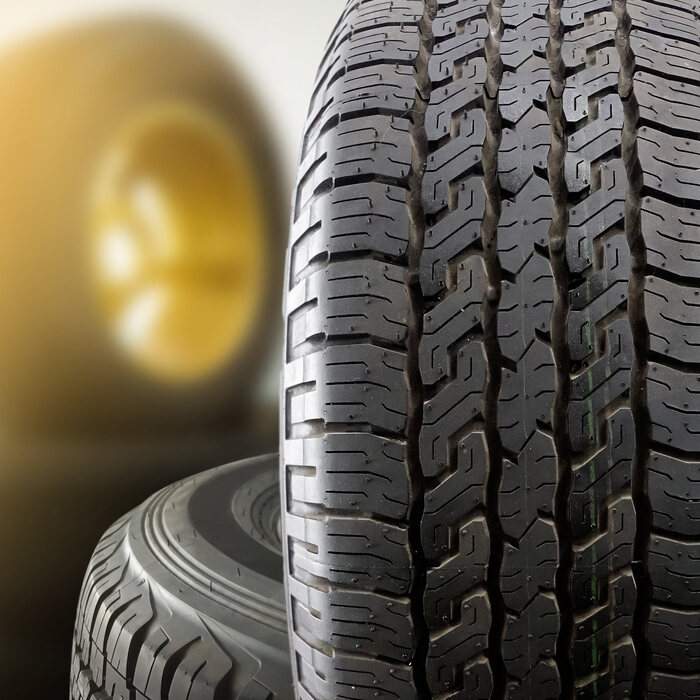TYRE ROTATION - HOW TO ROTATE AND LOOK AFTER CAR TYRES
Tyre rotation is the process of changing the position of the tyres on your vehicle.
Periodically switching where they are means they’ll wear evenly and be less likely to require changing one at a time. Also, by allowing yourself the opportunity to thoroughly check the tyres, you’re far less likely to accidentally use them when the tread depth wears below the legal minimum of 1.6mm.
Tyre rotation is recommended by manufacturers, and the details for when you should do this will be outlined in the vehicle’s handbook.
How to look after your tyres
Looking after your tyres is as important as checking the oil, and is much more than simply not forgetting to wash them along with the rest of the car.
Check your tyres every two weeks
Every two weeks you should check your tyres for excessive wear to make sure the tread isn’t below the legal limit of 1.6mm. At the same time you should also check the pressure, so it remains in line with what’s advised in your vehicle handbook.
Don’t speed or overload the vehicle
Your tyres are only designed to travel at a certain speed, which is marked on the sidewall by the final letter, known as the speed rating.
The sidewall will also give you an indication as to how much weight the tyres can carry. Exceeding the total weight (including passengers, load, and the vehicle itself) can lead to tyre damage.
Use the correct seasonal tyres
Using summer tyres and winter tyres at the correct time of year is vital. Not doing so will not only increase risk to impared handling and safety, but also wear the tyres much quicker and potentially lead to cracking.
Another way to help slow wear is by ensuring that you rotate your tyres.
Is tyre rotation important?
Yes, tyre rotation is important, because tyres have a different job to do at the front and rear of the vehicle.
Tyres will wear slightly faster on the front when used on vehicles that are front-wheel drive, and likewise for the rear tyres of vehicles with rear-wheel drive. This is due to the extra traction when accelerating and braking.
Similarly, as front tyres are used to steer, they can experience more wear on the shoulders and sidewalls than rear tyres. Switching them will allow this wear to occur evenly across all four tyres.
All-wheel-drive vehicles require tyre rotation as this will lower the pressure placed on the drivetrain. This will also help to reduce wear and the need for more frequent replacements.
How often should I rotate my tyres?
As mentioned, your vehicle’s handbook will advise when you should rotate your tyres. However, as a general rule, it’s recommended that you do so once every six months, or 6,000 miles - whichever comes first.
You should consider rotating your tyres sooner than this if you notice uneven wear, if you regularly travel long distances or at high speeds, or if you frequently carry heavy loads.
Also, if you notice a humming sound while driving on smooth surfaces, you should inspect the tyres for signs of wear or damage. If there’s no obvious cause for the humming, you should consider rotating them, as the sound may be due to wear, which rotating will help to even out.
How do I rotate my tyres?
When the time comes to rotate your tyres, several things need to be considered: the type of tyre, whether the vehicle is front or rear-wheel drive, whether it’s four-wheel drive, the tyre size, or whether the tyres are directional/non-directional.
Uniform, non-directional tyres
Tyres that are designed to be used on either side of the vehicle, front or rear, can be rotated in a variety of ways.
Forward Cross
When the front tyres are moved to the rear and kept on the same side, and the rear tyres are moved to the front on the opposite side. This is used on front-wheel drive vehicles.
Rearward Cross
This is opposite to the forward cross. The rear tyres are moved to the front on the same side, and the front tyres are moved to the rear, on the opposite side. This is used on all-wheel, four-wheel, or rear-wheel drive vehicles.
X Pattern
When the rear wheels and front wheels switch sides, both forwards and sideways, in an X shaped movement. This is best for front-wheel drive vehicles.
Directional and high-performance tyres
Rotating isn’t just recommended for standard tyres, but also vehicles with tyres of different sizes and directional tyres.
Side to side
When front and rear tyres are different sizes, they should only be switched side to side, remaining on the same axle.
Front to back
Tyres remain on the same side of the vehicle, but swap from front to rear and vice versa. This applies to directional tyres.
How do I rotate my tyres?
To rotate your tyres, you’ll need all the tools you should carry with you for changing a spare. This includes jack, wheel brace, wheel nut key, and wheel chock. In addition, you will also need axle stands that can support the full weight of your vehicle while you rotate the tyres.
You can refer to our full tutorial on how to change a flat car tyre for more information.
If you’re not confident changing a tyre or you’d just like someone else to do the hard work, the team at Just Tyres will be happy to help you rotate your tyres.
Buy your tyres online with Just Tyres
If you’re looking for help rotating or replacing your tyres, contact us today and a member of our team will be able to arrange for one of our tyre specialists to do this for you.
Enter your vehicle registration number into our fast, easy-to-use tool today, for an instant quote and to buy your tyres online.






 Same Day Fitting. Order By 10:30am
Same Day Fitting. Order By 10:30am
 38 Nationwide Fitting Centres
38 Nationwide Fitting Centres
 5 Year Warranty On All Tyres
5 Year Warranty On All Tyres
 Price Check Promise. Always Great Deals
Price Check Promise. Always Great Deals

 Find a Centre
Find a Centre

